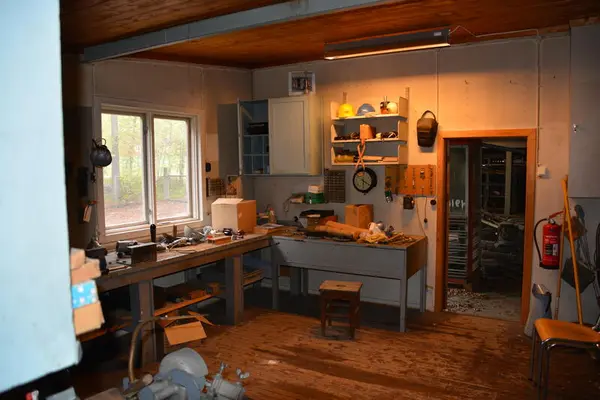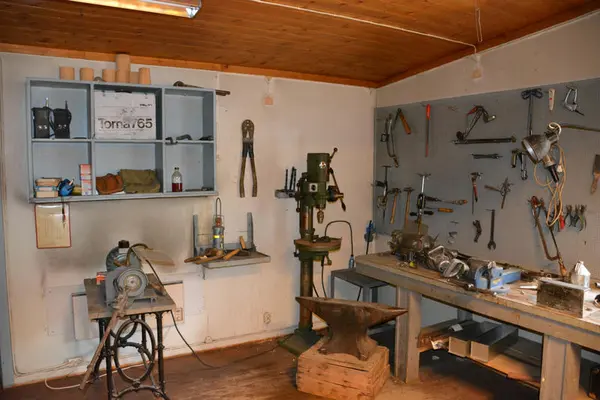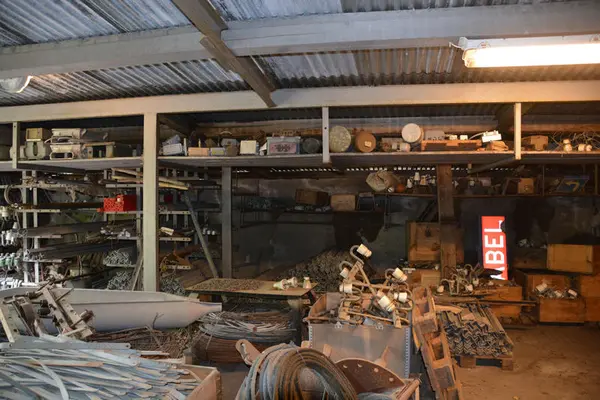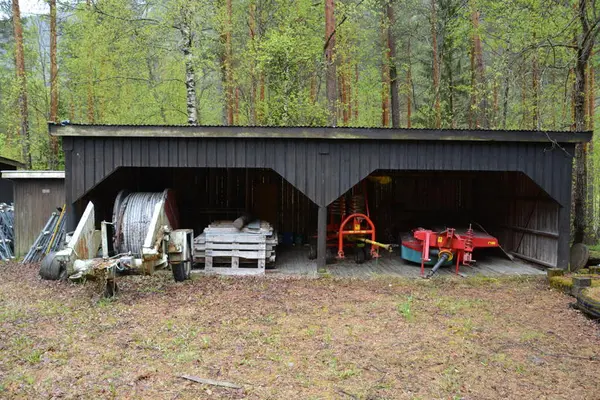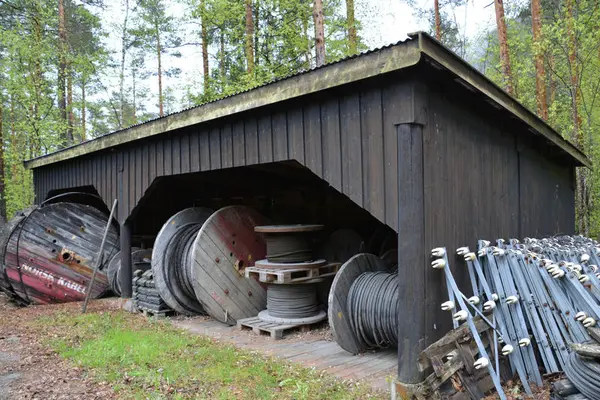-
Miland fitter's base. Interior Stein Domaas/Telemuseet
On a worn, wooden table there are a pile of lightly dressed ladies, vintage Cocktail magazines so charmingly innocent they don’t look anything like today’s pornography.
-Yes, that is part of the culture, smiles Helge Bakken, overseer and caretaker at the defunct base. He used to work here back in the seventies and eighties, now he just stops by 4-5 times per year to check that everything is ok. Apart from a water leak, the brown stained building among state owned trees, has survived well since the tools were laid down for the last time back in the 1980s. Most things are as it were, in the cupboard in the kitchen there are mugs and saucers lined up next to a bone dry pack of Lipton tea. If it hadn’t been for the thin layer of dust everywhere, you would have been forgiven for thinking that the place was still up and running. Tools lying around look like they’re waiting to be picked up. It seems that at any point, a tele fitter could enter the workshop…
- 1/2
Tools and equipment Stein Domaas/Telemuseet - 2/2
The fitter's store Stein Domaas/Telemuseet
This is how we can imagine a normal morning would be like for one of the approximately 10 telecoms fitters working here at Miland fitter’s base. The base was covering the area from Tinn Austbygd to Møsvatn, and up along the valley, Tessungdalen.
-It could be quite weather beaten here. Telenor has a mast at the peak of Gaustatoppen, and every so often we had to go up there, says Helge.
-How was the work environment here at the base? How was the ambience?
-It was good. We made an effort to make the lads feel content. Among other things, we got hold of a ramp so they could work on their cars in their spare time, Helge points to the green lawn that surrounds the base. A car ramp, almost completely overgrown, is still just visible. That’s where they kept themselves entertained, the young lads that came to Miland to learn the trade.
-They received their training here, before passing their exams afterwards. Telenor had their own schools for telecoms fitters, says Helge.
There is a pile of old poles behind the car ramp.
-They’ll be bent like bananas if they’re left like that, says Helge with exasperation. He’d rather show us one of the poles in the open sided shelter at the lower end of the plot. This pole is special; it’s put together by to halves cut at a slant.
-Sometimes the poles needed splicing, explains Helge. He points at two holes going straight though the timber:
-The woodpeckers have been busy as well.
-
Miland fitter's base Stein Domaas/Telemuseet
In his hand he’s holding a coffee mug with a “Televerket” emblem on it. He puts it down on the workbench, before going over to the shelf that fills one wall of the workshop. Everything from small screws and walkie-talkies to peach-coloured toilet paper is kept there. The fitter selects a few nuts and puts them in his pocket. They might come in handy. On his way out of the door, he takes the car key of its hook, and nods over to his colleague who is standing bent over a belt sander.
Outside of the door, he stops and takes a look around. The yard in front of the workshop is filled with cable trolleys, winches, wheel barrows, insulators and metal planks, among other things. The fitter can’t find what he’s looking for. He has to stop by the stores. There, among old skis and ditch gauges, he picks up a bundle of valuable copper wire. One of the lines on the protected course between Notodden and Hjartdal has been cut. Today’s assignment is to splice the line with new wire.
A lot of stuff has accumulated in the yard throughout the years. Helge shows us around and explains: A rusty car, some old winches, a load of separation boards for trench laying high voltage cable, the remains of a sea cable that’s lying across Tinnsjø, a wonky outside toilet, the carcass of a fox he found the other day, and finally; even more insulators.
-It needs a good tidy, he sighs.
-If the place is to be preserved, we have to look after things.
-Do you think there’s any point in protecting Miland fitter’s base?
Helge is nodding. Sure there is. Just think about all those people working in Telenor today!
-There is something about knowing the origins of what you’re doing. Nowadays a lot of people don’t even know what a telephone with a dial is. I have a few old Morse apparatus at home. People ask: “Wow, are they film projectors?”
Arnfinn Kveum agrees. The line manager came driving in a car with “Sønnico,” written on it, and is more than happy to have a chat about the old base.
-So far as it’s decided that the place is going to be protected, it should be in order so that people can come and have a look, he says.
-Now we have Tinnsjø with the ferries, and Rjukan…He looks over to Helge:
-What is it they call it?
-World heritage.
-Exactly. Miland is just like a sort of museum, since everything has stood stock-still here.
Arnfinn comes up with an idea:
-They should put up a couple of poles and a stretch of wire here, so they could connect the line to the exchange. Set up a length of Morse wire and a couple of Morse apparatus, and let people have a go.
Helge thinks they would come a long way with a proper clear up, and a lick of paint in bringing the base back to its former glory of the 1960s and 70s. At one point the two experienced telecoms fitters look at each other and smile. Finally, one of them speaks:
-We should probably get a protection order as well.
- 1/2
From the courtyard Stein Domaas/Telemuseet - 2/2
Cable drums Terje Norli/Telemuseet
